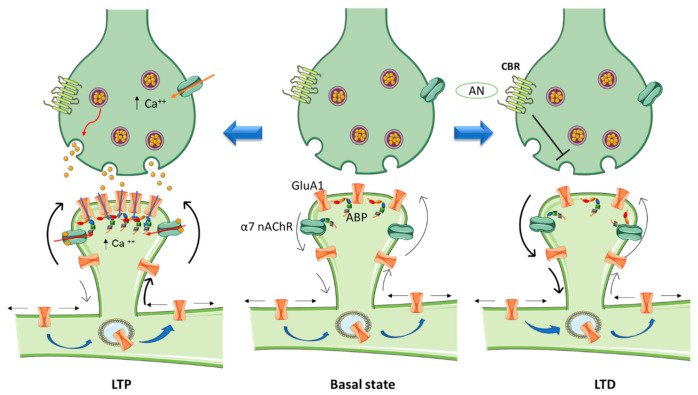Figure 1.
Schematic diagram highlighting the role of nanoscale sub-compartmentalization of the dendritic spine in synaptic plasticity. The “basal” state can be depicted as a homeostatic equilibrium between synthesis, lateral diffusion, internalization, degradation, and recycling of neurotransmitter receptors at the dendritic spine. Activation of α7 nicotinic acetylcholine receptor (α7 nAChR) in the hippocampus by agonist on postsynaptic sites promotes LTP (left) by depolarizing the spine which induces glutamatergic GluA1 receptors to cluster at the PSD. This incorporation of GluA1 receptor molecules further contributes to calcium entry, thus strengthening synaptic transmission. The opposite phenomenon (LTD, right) is induced by activation of presynaptic cannabinoid receptors (CBRs): neurotransmitter release is inhibited, thereby weakening synaptic transmission, and GluA1 receptors are depopulated from the PSD. ABP: actin binding proteins; AN: anandamine.

